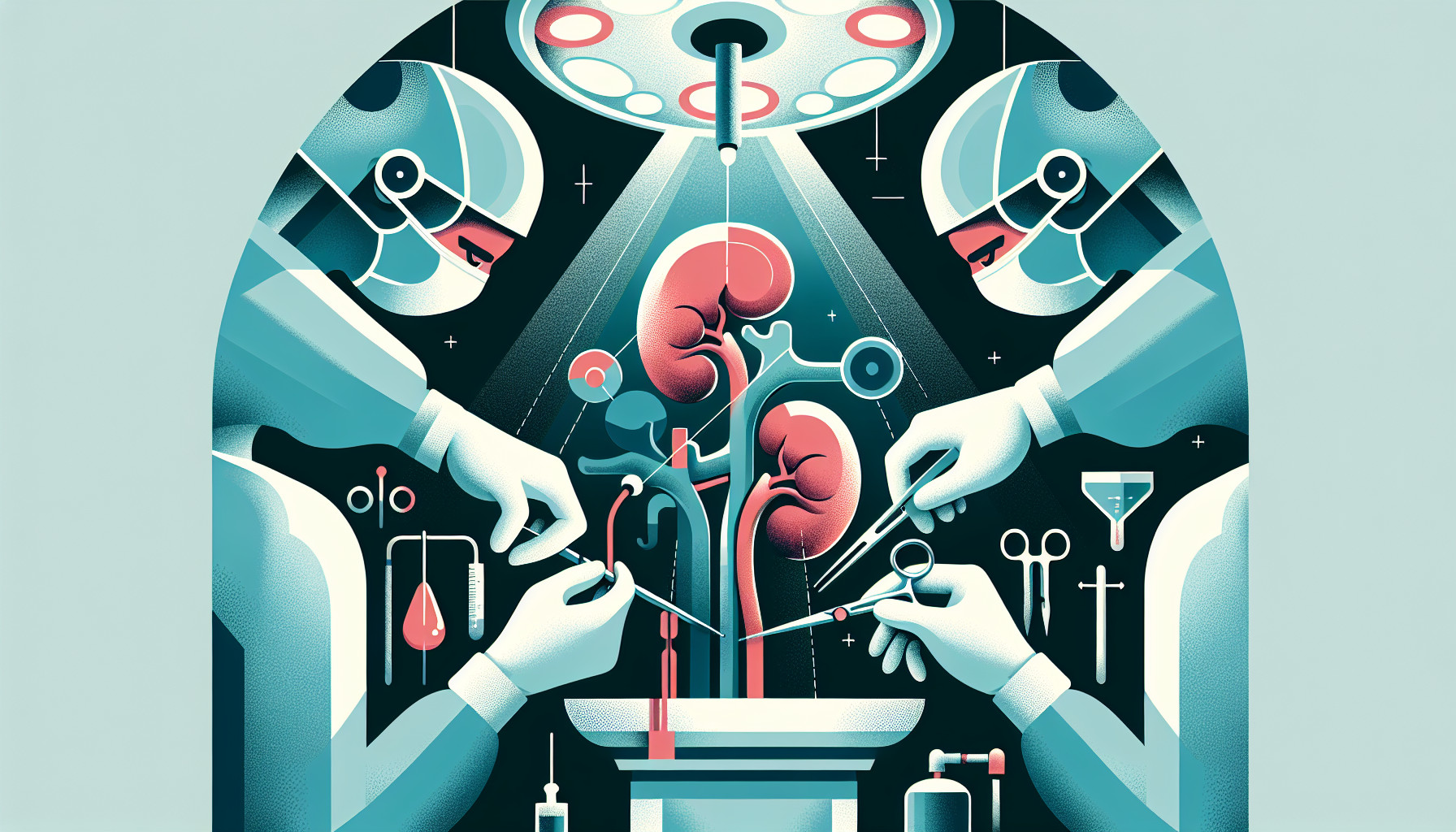Our Summary
When someone donates a kidney, doctors usually take the left one, often using a minimally invasive method called laparoscopic surgery. But sometimes they have to take the right kidney and often use a more invasive method called open surgery. This research looks at the results of right kidney removals done with laparoscopic surgery, which are not as common.
The researchers looked at 850 kidney donations. Most of these were left kidneys (640), but 210 were right kidneys. Of those right kidneys, 160 were removed with laparoscopic surgery and 50 with open surgery. They looked at why the right kidney was chosen and why they used open surgery. They also looked at who the donors were and what happened during and after surgery.
The reason for choosing the right kidney often had to do with the donor. Factors that influenced the choice of surgery method often had to do with the recipient. These factors included the recipient’s weight and the type of transplant they were getting.
After looking at all this data, the researchers found that laparoscopic surgery for right kidney removal is just as safe as the other methods. The outcomes for the recipients were also similar, no matter which surgery was used.
They concluded that when deciding on which kidney to remove and how to do it, doctors should carefully consider factors related to both the donor and the recipient. They also suggested that small changes in the laparoscopic technique could make this method more appealing for right kidney removal.
FAQs
- Why do doctors usually prefer to take the left kidney for donation?
- What factors influence the choice of surgical method for kidney removal?
- How do the outcomes of laparoscopic surgery for right kidney removal compare with other methods?
Doctor’s Tip
One helpful tip a doctor might tell a patient about laparoscopic nephrectomy is to follow all pre-operative instructions provided by the healthcare team. This may include fasting before surgery, stopping certain medications, and preparing for the recovery process. Following these instructions can help ensure a successful surgery and smoother recovery. Additionally, staying active and maintaining a healthy lifestyle before surgery can also help improve outcomes.
Suitable For
Patients who are typically recommended for laparoscopic nephrectomy include those who are donating a kidney for transplantation, as well as those with conditions such as kidney cancer, kidney stones, or other renal disorders that require removal of the kidney. Additionally, patients who are at a higher risk for complications with traditional open surgery, such as those who are obese or have other health conditions, may also be recommended for laparoscopic nephrectomy. Overall, laparoscopic nephrectomy is a safe and effective option for a variety of patients in need of kidney removal surgery.
Timeline
Pre-surgery: The patient undergoes a series of medical tests and evaluations to determine if they are a suitable candidate for kidney donation. This includes blood tests, imaging scans, and consultations with the medical team. The donor also receives counseling on the risks and benefits of the procedure.
Day of surgery: The patient is admitted to the hospital and undergoes laparoscopic nephrectomy. The surgery is performed under general anesthesia, and small incisions are made in the abdomen to remove the kidney. The procedure usually takes a few hours.
Post-surgery: The patient spends a few days in the hospital for monitoring and recovery. They may experience pain and discomfort, but this is managed with medication. The medical team closely monitors the patient for any complications, such as bleeding or infection.
Weeks to months after surgery: The patient continues to recover at home, gradually returning to normal activities. They may experience fatigue, soreness, and changes in kidney function, but these usually improve over time. The medical team follows up with the patient regularly to ensure their well-being and kidney function.
Overall, laparoscopic nephrectomy is a safe and effective procedure for kidney donation, with minimal scarring and faster recovery compared to open surgery. The patient’s quality of life is generally not significantly affected by the procedure, and they can go on to live a healthy and normal life with one kidney.
What to Ask Your Doctor
Some questions a patient should ask their doctor about laparoscopic nephrectomy for right kidney removal may include:
- Why is the right kidney being chosen for removal in my case?
- What factors influenced the decision to use laparoscopic surgery instead of open surgery for my procedure?
- What are the potential risks and complications associated with laparoscopic nephrectomy for right kidney removal?
- How does the recovery process differ between laparoscopic and open surgery for right kidney removal?
- What can I expect in terms of post-operative pain management and recovery time?
- Are there any long-term effects or considerations to be aware of after undergoing laparoscopic nephrectomy for right kidney removal?
- How often do you perform laparoscopic nephrectomy for right kidney removal, and what is your experience with this procedure?
- Are there any specific lifestyle changes or precautions I should take after having my right kidney removed laparoscopically?
- What are the success rates and outcomes for recipients of kidney transplants from right kidneys removed laparoscopically?
- Are there any alternative treatment options or considerations I should be aware of before undergoing laparoscopic nephrectomy for right kidney removal?
Reference
Authors: Tyagi V, Singh M, Pahwa M, Jain S, Chaddha S, Jauhari H. Journal: Exp Clin Transplant. 2021 Mar;19(3):217-223. doi: 10.6002/ect.2020.0346. Epub 2021 Feb 19. PMID: 33605202
